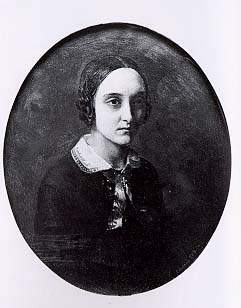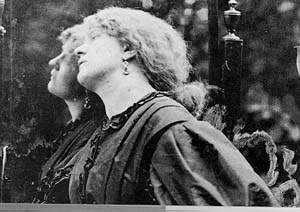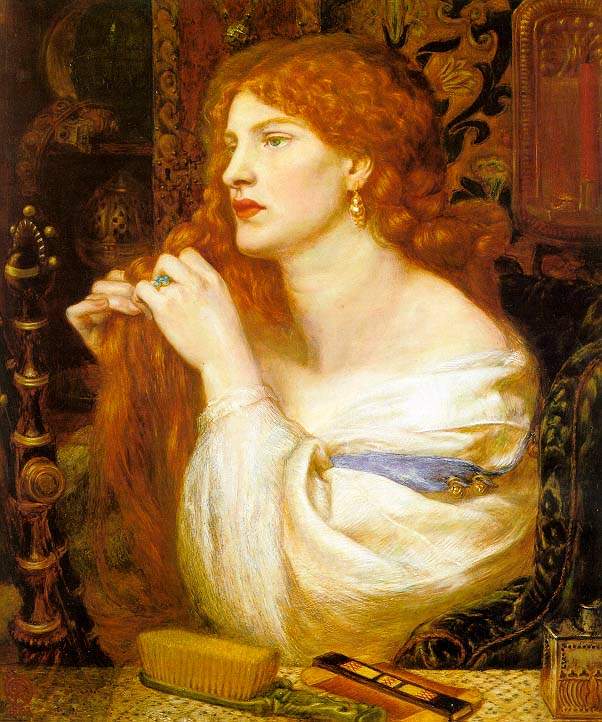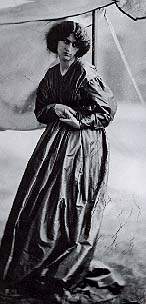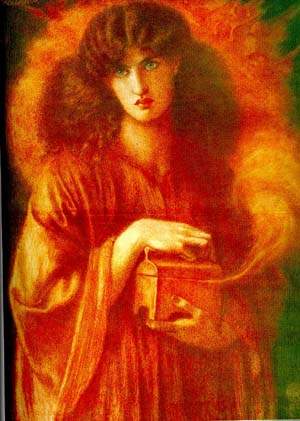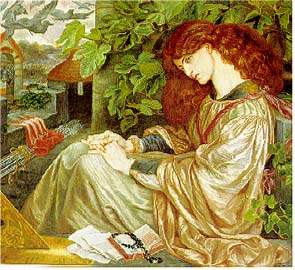III. Jane
Morris cast as Pandora, Prosperine and the poor Pia.
Why? To show DGR's love for her, sympathy with her conditions,
or to contain her power in his paintings?
|
|
|
photograph of
Jane Morris, 1865
John R. Parsons (Marsh 26) |
Dante Gabriel
Rossetti
Prosperine, 1877. (captive in the underworld, because she has eaten pomegranate
seeds, shown here in carnal red. Marsh 144) |
| How are these
two different? |
|
|
|
|
| Dante Gabriel
Rossetti, Pandora, 1869. (Marsh 27) |
.La Pia De'Tolomei
(story from Dante, about poor Pia, imprioned by a cruel husband
in a fortress where she dies of despire and disease, Marsh
144-145)
D.G. Rossetti, 1868-90. |
IV.
The Blessed Damosel

Dante Gabriel Rossetti
The Blessed Damozel, 1875-1878
The Harvard University Art Museum
(Fogg Art Museum) Cambridge, Massachusetts;
Bequest of Grenville L. Winthrop |
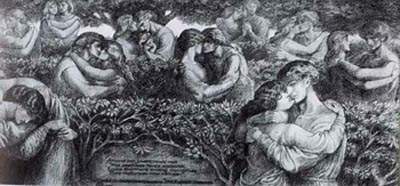
study for lovers in The Blessed Damozel, 1876 Dante
Gabriel Rossetti, (Marsh 57) (The
two female figures in the foreground are modelled on Jane
Morris.)
"Around
her,, lovers, newly met
'Mid deathless love's acclaims,
Spoke evermore amongst themselves
Their rapturous new names." |
|
|
